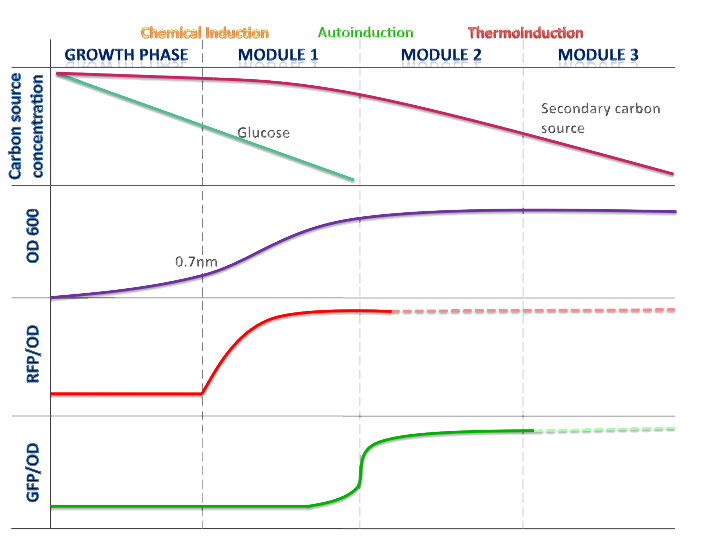Team:Imperial College London/Temporal Control
From 2009.igem.org
(Difference between revisions)
(→Introduction) |
(→Introduction) |
||
| Line 4: | Line 4: | ||
=Introduction= | =Introduction= | ||
| - | In the <b><i>E.ncapsulator</i></b>, temporal control is an integral part of the design. Our 3 modules ([https://2009.igem.org/Team:Imperial_College_London/M1 Protein Production], [https://2009.igem.org/Team:Imperial_College_London/M2 Encapsulation] and [https://2009.igem.org/Team:Imperial_College_London/M3 Genomic deletion]) can only perform their function in this large scale system if they have a temporal | + | In the <b><i>E.ncapsulator</i></b>, temporal control is an integral part of the design. Our 3 modules ([https://2009.igem.org/Team:Imperial_College_London/M1 Protein Production], [https://2009.igem.org/Team:Imperial_College_London/M2 Encapsulation] and [https://2009.igem.org/Team:Imperial_College_London/M3 Genomic deletion]) can only perform their function in this large scale system if they have a temporal mechanism triggering them in a sequential manner. This was achieved using 3 different types of control: |
*[Chemical induction] | *[Chemical induction] | ||
Revision as of 20:20, 16 September 2009

Contents |
Introduction
In the E.ncapsulator, temporal control is an integral part of the design. Our 3 modules (Protein Production, Encapsulation and Genomic deletion) can only perform their function in this large scale system if they have a temporal mechanism triggering them in a sequential manner. This was achieved using 3 different types of control:
- [Chemical induction]
- [Autoinduction]
- [Thermoinduction]
Chemical induction
Autoinduction
Thermoinduction
 "
"




